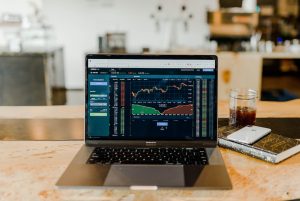Forex trading can be an exciting and rewarding experience for many traders. However, without proper money management techniques, it can also be a risky and costly endeavor. Effective forex money management techniques are essential for maximizing profit and minimizing risk in the forex market.
What is Forex Money Management?
Forex money management refers to the process of managing the amount of money invested in each trade, the percentage of the account balance risked per trade, and the overall risk exposure of the trading account. The goal of forex money management is to ensure that traders have enough capital to continue trading even after a series of losing trades.
Maximizing Profit with Effective Forex Money Management Techniques
1. Use Stop Loss Orders
One of the most effective money management techniques is the use of stop-loss orders. A stop-loss order is a type of order that automatically closes a trade when the market reaches a certain price level. It is used to limit losses and protect profits.
Stop-loss orders are essential for controlling risk and preventing large losses. Traders should always set a stop-loss order for every trade they make. The stop-loss order should be placed at a level that is reasonable for the particular market being traded.
2. Risk Management
Risk management is an important aspect of forex money management. Traders should never risk more than they can afford to lose. It is important to determine the maximum percentage of the account balance that will be risked per trade.
The general rule of thumb is to risk no more than 2% of the account balance per trade. This means that if a trader has a $10,000 account balance, they should not risk more than $200 per trade.
3. Position Sizing
Position sizing is another critical aspect of forex money management. Position sizing refers to the amount of money that is invested in each trade. A trader should always determine the position size based on the risk per trade.
For example, if a trader has a $10,000 account balance and risks 1% per trade, the maximum risk per trade is $100. Therefore, the position size for the trade should be based on the maximum risk per trade.
4. Use Leverage Wisely
Leverage is a powerful tool that can amplify profits, but it can also amplify losses. Traders must use leverage wisely and never risk more than they can afford to lose.
It is important to understand the risks associated with leverage and to use it only when necessary. A good rule of thumb is to use leverage no more than 10:1.
5. Keep a Trading Journal
Keeping a trading journal is an effective way to track progress and identify areas for improvement. A trading journal should include details of every trade made, including the entry and exit points, the position size, the profit or loss, and the reason for the trade.
By analyzing the trading journal, traders can identify patterns and trends in their trading behavior. This can help traders to identify areas for improvement and make necessary adjustments to their trading strategies.
Conclusion
Effective forex money management techniques are essential for maximizing profit and minimizing risk in the forex market. By using stop-loss orders, practicing risk management, determining position sizing, using leverage wisely, and keeping a trading journal, traders can improve their chances of success in the forex market.






